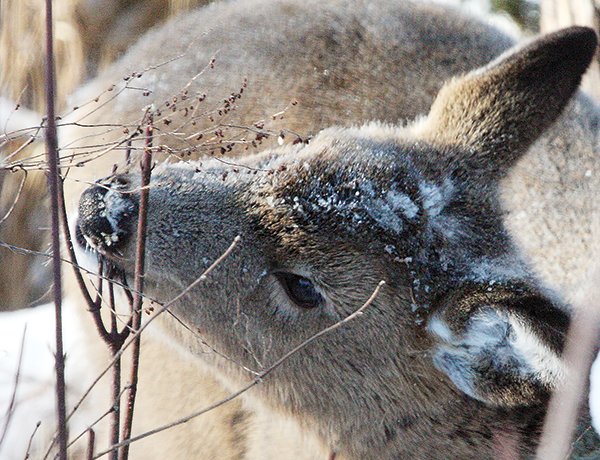Support the Timberjay by making a donation.
Mild winter could help whitetail recovery
REGIONAL— Below average snowfall and record mild temperatures so far this winter should have whitetail deer in recovery mode depending on conditions over the next several weeks. While whitetail …
This item is available in full to subscribers.
Attention subscribers
To continue reading, you will need to either log in to your subscriber account, or purchase a new subscription.
If you are a current print subscriber, you can set up a free website account and connect your subscription to it by clicking here.
If you are a digital subscriber with an active, online-only subscription then you already have an account here. Just reset your password if you've not yet logged in to your account on this new site.
Otherwise, click here to view your options for subscribing.
Please log in to continue |
Mild winter could help whitetail recovery
REGIONAL— Below average snowfall and record mild temperatures so far this winter should have whitetail deer in recovery mode depending on conditions over the next several weeks. While whitetail deer are well-adapted to cold and snow, the North Country deer herd can experience significant mortality during the harsh conditions of winter.
The Department of Natural Resources gauges that impact through the use of its winter severity index, or WSI, which uses a combination of temperature and snow depth to estimate the impact winter will have on the region’s deer population.
So far this winter, the deer have had it easy, according to Tom Rusch, DNR wildlife manager in the Tower work area.
“Deer are in excellent shape going into the latter half of winter,” said Rusch. “White-tailed deer have been fairly unrestricted by snow up to this point, and unrestricted movement increases access to food sources and survival.” The limited snow also gives deer an advantage against wolves, their primary predators other than humans.
While the first half of winter was mild for deer, conditions could become harsher in the weeks ahead, and that could start to push the WSI higher. Even so, it has a long way to go to be considered a burden for deer. The index gains a point for each day with a temperature of zero or below and for each day with a snow depth of 15 inches or greater. Right now, according to Rusch, snow depth ranges from 12-14 inches in northern St. Louis County, so any significant additional snow would push snow depths above 15 inches, which begins to restrict deer movements. Snow depths in northern Lak County are already above that threshold, although the snow remains light and fluffy, which is easier for deer than dense or crusted snow.
While temperatures were record mild in December, January, and the first few days of February, that was forecast to change dramatically by the weekend, with several consecutive days of subzero highs and nighttime lows that could push 30-40 below zero across the North Country.
Even so, the WSI readings heading into the season’s first real cold snap remain remarkably low, with fewer than 20 points, all for subzero temperature readings. Any winter that finishes with a WSI below 50 is considered a mild winter, while values above 120 are considered severe. Here in far northern Minnesota, a 120 reading is close to average, while 160 or above is generally considered severe.






